TECHNOLOGY
Sankkucomplex: Unraveling the Concept Behind the Buzz
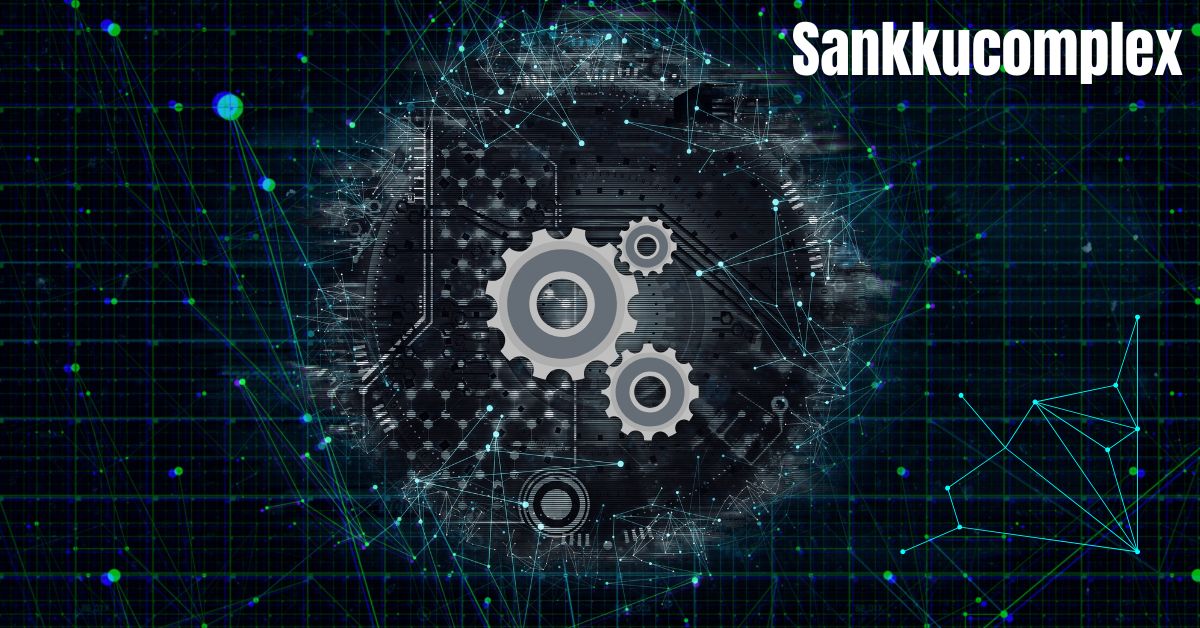
Sankkucomplex has emerged as a captivating term online, sparking discussion across technology, culture, and creative circles. While the phrase isn’t officially defined, multiple interpretations share common themes: layered structure, individual identity, and systems built for complexity. Whether encountered in digital art discussions, philosophical essays, tech forums, or urban design reflections, Sankkucomplex invites deeper exploration. This article unpacks its meanings, examines its applications, and explains why it’s gaining traction in 2025.
What Is Sankkucomplex?
Sankkucomplex appears in various contexts, from psychological analysis to tech systems or even architectural metaphors. In identity discussions, it may describe emotional isolation or creative escapism within online subcultures. In tech and organizational settings, it references modular frameworks where discrete components integrate into coherent systems. Meanwhile, in design or planning, it imagines vertical or layered living spaces blending function and aesthetics.
Across these interpretations, the core notion is the transformation of complexity into structured forms—whether psychological, digital, or spatial.
Origins and Etymology of the Term
The name likely traces back to “Sankaku Complex,” a cultural reference within fandom communities. The altered spelling—particularly the double ‘k’—suggests an intentional variation or digital evolution. Some believe the term was adopted in niche forums to express layered identity or insular creative ecosystems. Others propose that it originated as a metaphor for hybrid design systems that flexibly combine relationships, data layers, and social architecture—all under a single conceptual umbrella.
This origin reflects transformation: from geek-culture niche to a broader metaphor for structural integration.
Psychological and Cultural Dimensions
In digital and cultural spaces, Sankkucomplex captures subjective emotional states. It describes individuals who navigate identity through fragmented, overlapping roles—often shaped by fandom, digital anonymity, or alternative subcultures. These individuals piece together creative selves from art, online personas, and social allegiances, embracing complexity rather than hiding behind conventional identity clarity.
It’s akin to living in multiple worlds at once—where emotional resilience arises from layered self-expression rather than uniformity.
Modular Systems and Digital Architecture
Beyond emotional meaning, Sankkucomplex also describes systems-level architectures marked by layering:
-
Microservices connecting through APIs in software design
-
Decentralized networks where nodes manage discrete responsibilities
-
Organizational approaches with cross-functional pods operating within broader frameworks
In tech, Sankkucomplex implies a dynamic ecosystem where flexible components support innovation without centralized failure points.
Urban Design and Layered Environments
Architecturally, Sankkucomplex has inspired alternative building theories—vertical complexes integrating housing, workspaces, recreation, and greenery. These layered habitats emphasize coherence across use areas, accessibility, and community connectivity, suggesting urban forms that mirror the modular resilience seen in digital systems.
This spatial vision echoes the framework idea: modular subsystems organized into holistic, sustainable experiences.
Gaps in Existing Coverage
Most online references focus on a single interpretation—psychological identity, modular architecture, or design metaphor—without acknowledging overlap. Few delve into how these meanings interact, and none showcase real-world or case-based examples. There’s little exploration of how individuals or systems embody multi-layered identity while supporting modular function.
Addressing Content Gaps Through Case Examples
To enrich discussion and provide value:
-
Highlight communities using modular software to coordinate diverse creative tasks
-
Share architectural experiments inspired by vertical multi-use living spaces
-
Include stories of individuals navigating multiple creative identities across platforms or art genres
-
Draw comparisons between digital ecosystems and urban living structures built on layered communities
Adding these examples fosters comprehension and coherence across use cases.
Why Sankkucomplex Resonates Today
In 2025, we live in an increasingly hybrid reality: remote work, decentralized platforms, layered online personas, and integrated physical-digital experiences. Sankkucomplex captures this modern complexity: identity that’s modular; systems built for adaptability; environments that support overlapping function. It symbolizes not just a concept but an emerging mindset.
Audience Takeaways
If you’re exploring:
-
Identity in online subcultures or creative networks—Sankkucomplex offers emotional resonance
-
Modular workflows or decentralized organization—apply principles of layered architecture
-
Innovative urban or hybrid design—adapt layered living metaphors
-
Digital trends tracking—this term signals convergence of culture, tech, and identity
Conclusion
Sankkucomplex may still lack a universal definition, but its central theme—a unification of layered identity, modular systems, and hybrid spaces—makes it deeply relevant in our interconnected world. Whether as a psychological metaphor, software strategy, or architectural ideal, it reflects a modern drive to integrate complexity with coherence. Watching how the term evolves offers insight into how we adapt to layered futures in identity, community, and design.
TECHNOLOGY
Usitility 0caqdakp55y: Transforming Workflows One Task at a Time
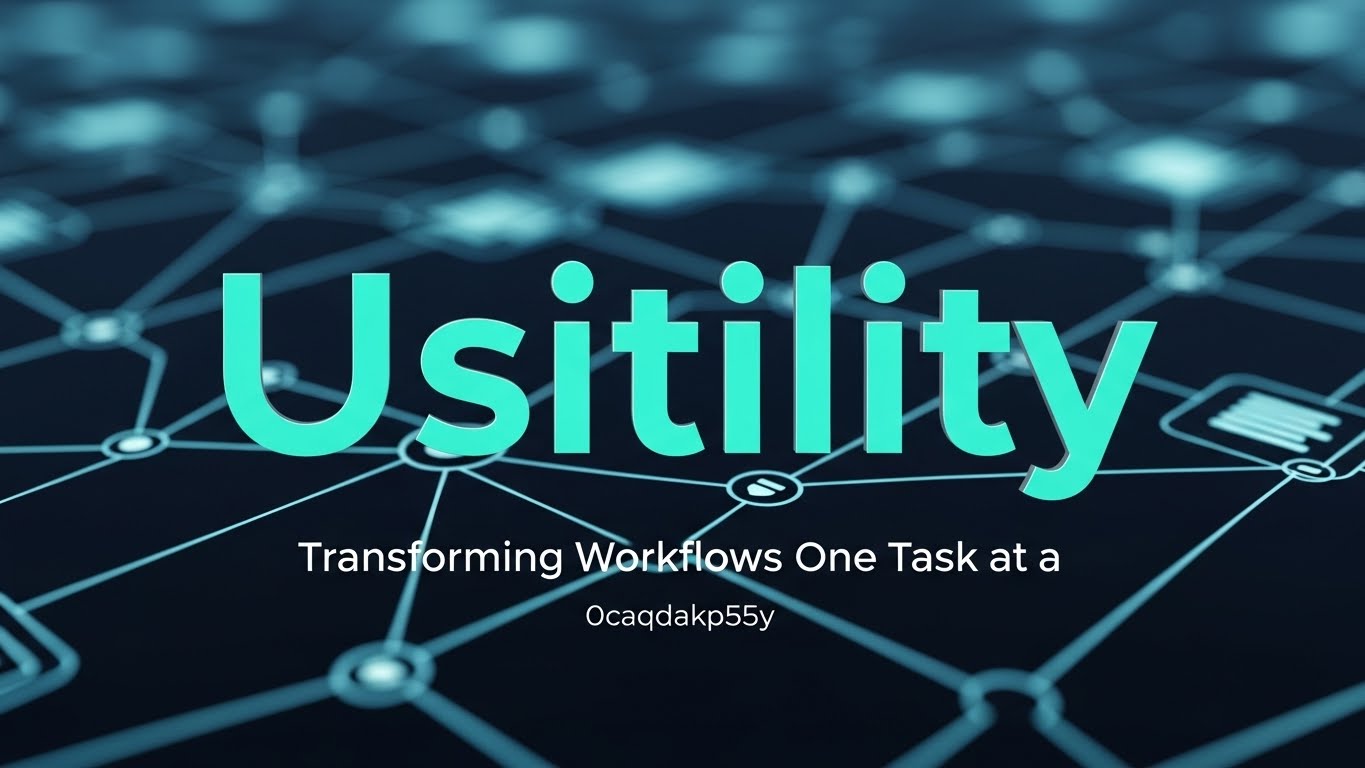
In today’s fast-paced business world, efficiency is key. Teams are constantly searching for innovative ways to streamline their processes and enhance productivity. Enter Usitility 0caqdakp55y—a game-changer in workflow management that promises to transform how tasks are approached and executed within organizations of all sizes. Imagine a platform designed not just to make your job easier but to revolutionize the entire way you work. With its user-friendly interface and powerful features, Usitility is set to redefine workflows one task at a time, making it an essential tool for any forward-thinking company looking to stay ahead of the curve. Let’s delve deeper into what makes this platform so special and how it can elevate your team’s performance like never before.
What is Usitility 0caqdakp55y?
Usitility 0caqdakp55y is an innovative platform designed to streamline workflows and enhance productivity. It focuses on automating mundane tasks, allowing team members to concentrate on more strategic activities.
This tool integrates seamlessly with existing software systems, making it a versatile solution for various industries. Its user-friendly interface ensures that even those less tech-savvy can navigate the features effortlessly.
With customizable options, businesses can tailor Usitility 0caqdakp55y to meet their specific needs. This adaptability encourages creativity and efficiency among teams, transforming how work gets done daily.
From task management to analytics, this platform offers comprehensive solutions that empower organizations. Embracing Usitility means embracing a future where manual processes become obsolete, paving the way for innovation and growth.
How Usitility 0caqdakp55y Works
Usitility 0caqdakp55y operates on a streamlined framework designed to enhance productivity. It integrates various tools into one cohesive platform, allowing teams to manage tasks seamlessly.
At its core, Usitility utilizes automation. This reduces manual effort and minimizes errors. Users can set up workflows that automatically trigger actions based on specific criteria. This saves time and boosts efficiency.
Collaboration is another key element of Usitility 0caqdakp55y. Team members can communicate in real-time, share updates, and track progress without the need for endless email threads.
The user interface is intuitive, making it accessible for everyone in an organization. With customizable dashboards and reporting features, users gain valuable insights into their performance at a glance.
By harnessing these capabilities, companies can adapt quickly to changes and streamline their processes effectively.
Tips for Implementing Usitility 0caqdakp55
Implementing Usitility 0caqdakp55y can transform your workflows seamlessly. Start by assessing your current processes. Identify bottlenecks and areas where automation could save time.
Next, involve your team in the transition. Their input is invaluable for a smooth implementation. Educate them on how Usitility works and encourage feedback to enhance user experience.
Set clear objectives for what you want to achieve with Usitility 0caqdakp55y. This focus will help measure success down the line.
Begin with small tasks before scaling up to larger projects. This gradual approach minimizes disruption and allows you to fine-tune usage based on real-world insights.
Regularly review performance metrics once implemented. Adjust features as needed to ensure optimal efficiency across departments, making sure everyone stays aligned with company goals along the way.
The problem with traditional workflows
Traditional workflows often rely heavily on outdated processes. Many organizations stick to rigid structures that can stifle creativity and slow down productivity.
Communication tends to be siloed, with teams operating in isolation. This leads to misalignment and confusion over project goals. When information isn’t shared seamlessly, bottlenecks are created.
Additionally, manual tasks dominate these traditional methods. Employees may spend hours on repetitive activities instead of focusing on strategic initiatives that drive growth.
Flexibility is another major issue. As market demands shift rapidly, businesses need the ability to adapt quickly. Traditional workflows often lack this agility, leaving companies behind their competitors who embrace modern solutions.
These challenges highlight a growing need for innovation in workflow management systems. Embracing change is crucial for any organization aiming for sustained success in today’s fast-paced environment.
How Usitility solves these workflow issues
Usitility 0caqdakp55y directly addresses common workflow bottlenecks. Traditional systems often rely on outdated processes that hinder efficiency. With Usitility, tasks are streamlined and optimized for better performance.
Automation plays a crucial role here. Routine tasks can be automated, freeing up valuable time for employees to focus on strategic initiatives. This shift not only increases productivity but also enhances job satisfaction.
Collaboration is another area where Usitility excels. Team members can communicate in real-time, reducing delays caused by miscommunication or waiting for approvals. Everyone stays aligned with project goals and deadlines.
Customizable dashboards provide insights at a glance, allowing managers to identify issues before they escalate. By offering visibility into workflows, Usitility empowers organizations to make informed decisions swiftly.
With these solutions, businesses experience fewer disruptions and more seamless operations across teams and departments.
Key features of the Usitility platform
Usitility 0caqdakp55y stands out with its impressive suite of features designed to streamline workflows. The intuitive interface makes navigation a breeze, allowing users to access tools without extensive training.
Automation is at the core of Usitility. Routine tasks can be automated effortlessly, freeing up valuable time for teams to focus on more strategic initiatives.
Collaboration tools are also included, enhancing communication among team members. Real-time updates ensure everyone stays on the same page.
Another key feature is customization. Users can tailor dashboards and workflows according to their needs, making the platform versatile across various industries.
Analytics play a vital role as well; detailed reports provide insights into productivity trends and areas for improvement. This data-driven approach allows companies to make informed decisions quickly and effectively.
Success stories from companies using Usitility
Usitility 0caqdakp55y has become a game-changer for many companies aiming to streamline their operations. One notable example is TechNova, which reduced its project turnaround time by 30%. By integrating Usitility into their workflow, they enhanced collaboration and visibility across teams.
Another success story comes from GreenEarth, an environmental consultancy. They leveraged Usitility to automate repetitive tasks, allowing employees to focus on strategic initiatives. This shift not only boosted morale but also increased productivity by 25%.
Similarly, Creative Minds Agency transformed their client onboarding process with Usitility’s intuitive interface. Clients now experience a smoother transition into projects while the team saves hours in administration each week.
These examples illustrate how versatile and effective Usitility can be in diverse industries. Companies are witnessing tangible improvements that extend beyond simple metrics; it’s about fostering innovation and agility in everyday work practices.
Future plans for Usitility and its impact on the industry
Usitility 0caqdakp55y is on the brink of exciting advancements. The team envisions integrating artificial intelligence to further enhance task automation and decision-making processes.
They plan to expand their platform capabilities, allowing for seamless integration with various tools that businesses already use. This could lead to a more unified workflow experience across different departments.
Additionally, Usitility aims to deepen its analytics features. By offering richer insights into productivity metrics, companies can make data-driven decisions quickly and effectively.
The community around Usitility is also growing. User feedback will play a crucial role in shaping future updates and features. Engaging directly with clients ensures that developments align closely with real-world needs.
As they move forward, Usitility has the potential not just to improve individual workflows but also to set new industry standards in efficiency and collaboration.
Why every company should consider using Usitility for their workflow needs
Every company faces the challenge of managing tasks efficiently. Usitility 0caqdakp55y offers a solution that streamlines operations seamlessly.
With its intuitive interface, teams can easily adapt to this powerful tool. It eliminates confusion and allows for clear communication among members.
Time is money in any business. By automating repetitive tasks, Usitility frees up precious hours for employees to focus on what truly matters—innovation and growth.
The flexibility of the platform means it can cater to various industries. Whether you’re in tech, healthcare, or retail, there’s something beneficial for everyone.
Moreover, implementing Usitility encourages a culture of collaboration. When team members have access to shared resources and information, productivity naturally increases.
Investing in such technology isn’t just smart; it’s essential for staying competitive in today’s fast-paced market. Companies looking to thrive should definitely explore what Usitility has to offer.
Conclusion
Usitility 0caqdakp55y is a game changer for businesses looking to streamline their workflows. By addressing the limitations of traditional processes, it offers an innovative solution that enhances productivity and efficiency. The platform’s key features, such as automation tools and real-time collaboration capabilities, empower teams to work smarter and faster.
Success stories from various companies highlight how Usitility has transformed their operations, driving growth and improving employee satisfaction. As organizations continue to seek ways to adapt in a fast-paced environment, Usitility stands out as a valuable ally.
Embracing this technology can lead companies toward achieving their goals more effectively while fostering a culture of continuous improvement. Adopting Usitility 0caqdakp55y may very well be the strategic move your business needs to thrive in today’s competitive landscape.
TECHNOLOGY
The Future of Wapbald: Trends and Predictions for What’s Next
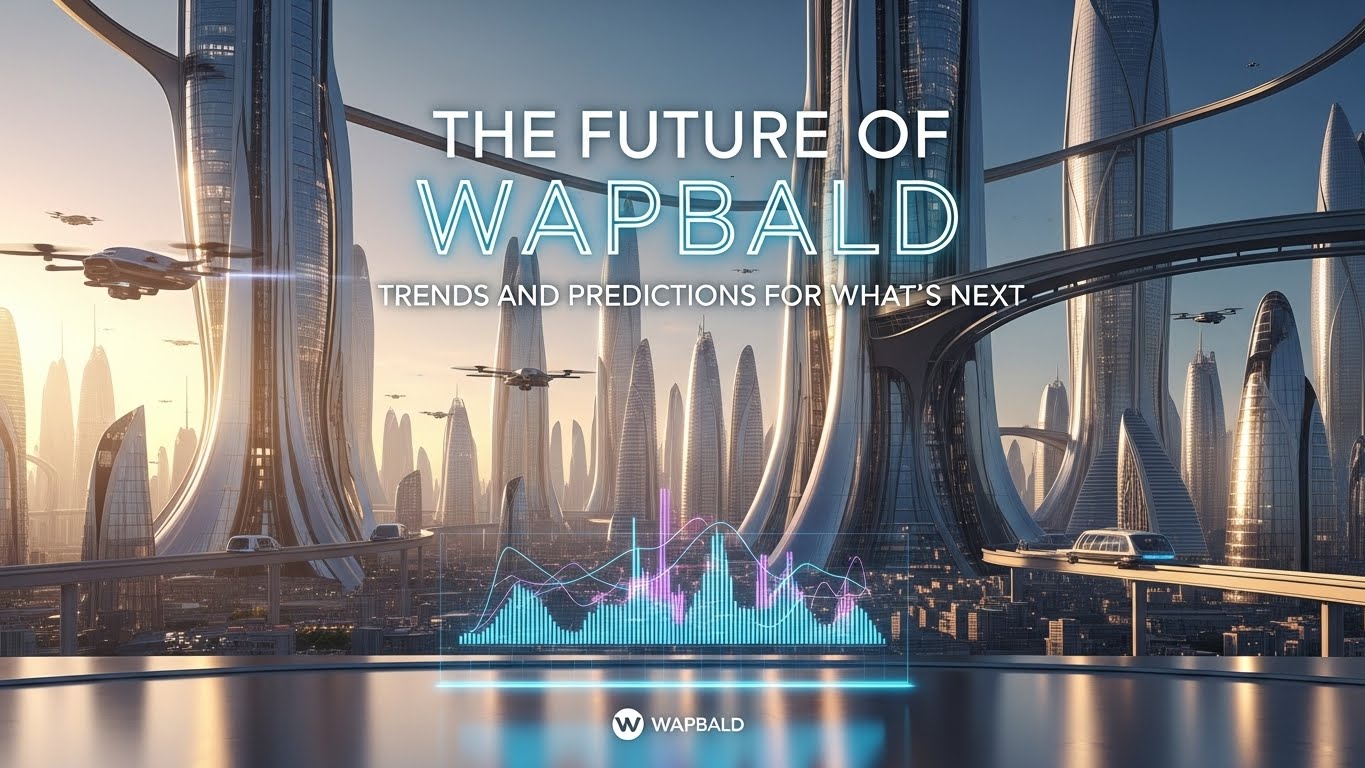
Wapbald has emerged as a dynamic force in the digital landscape, captivating millions with its unique blend of entertainment and social connection. As we navigate through 2023, it’s crucial to take stock of where Wapbald stands today and how it continues to evolve. The platform is not just another app; it’s a cultural phenomenon that reflects shifting user preferences and technological advancements. With a diverse community constantly pushing boundaries, what does the future hold for Wapbald? Let’s dive into the trends and predictions shaping this vibrant space.
What is Wapbald?
Wapbald is an innovative platform that has gained traction in recent years. It serves as a dynamic space for content sharing and community engagement. Users flock to Wapbald to showcase their creativity, connect with like-minded individuals, and explore diverse interests.
At its core, Wapbald fosters interaction through multimedia content. Whether it’s videos, articles or images, the platform allows users to express themselves in various formats. This flexibility appeals to a wide audience.
What sets Wapbald apart is its emphasis on user-driven experiences. Unlike traditional social media platforms, users have more control over their narratives and connections. The sense of community is palpable; members often support one another’s endeavors.
As technology evolves, so does Wapbald’s functionality, making it an exciting player in the digital landscape worth watching closely.
The Impact of Social Media on the Evolution of Wapbald
Social media has undeniably reshaped the landscape of Wapbald. Platforms like Instagram, TikTok, and Twitter have amplified its reach. Users now share their experiences and insights about Wapbald instantaneously.
As audiences engage with content related to Wapbald, trends emerge organically. This dynamic feedback loop encourages innovation within the platform itself. Creators strive to cater to what resonates most with users.
Furthermore, social media influencers play a pivotal role in driving awareness. Their endorsements can either catapult a trend or diminish interest overnight. The interplay between influencer culture and user-generated content fosters an environment ripe for evolution.
In this vibrant ecosystem, real-time interactions shape preferences rapidly. New features often stem from direct user suggestions shared across social channels. As we continue into the future, social media’s influence on Wapbald is bound to deepen further.
Emerging Technologies and Features on Wapbald
Emerging technologies are set to redefine Wapbald’s landscape. With the rise of artificial intelligence, personalized content recommendations will enhance user experience significantly. Users can expect feeds tailored to their interests, making engagement more meaningful.
Augmented reality features are also on the horizon. Imagine interacting with virtual elements directly through your Wapbald interface. This could transform how users connect and share experiences in real time.
Blockchain technology may play a crucial role too. Offering enhanced transparency and security for transactions can build trust among users, especially as monetization opportunities grow.
Voice recognition is becoming increasingly popular across platforms. Integrating this feature into Wapbald would allow seamless navigation and interaction without touching screens.
These technological advancements promise an exciting future for Wapbald, elevating it from a conventional social platform to an innovative hub of creativity and connection.
The Influence of Influencers: How They are Shaping Wapbald’s Future
Influencers are the pulse of Wapbald’s vibrant ecosystem. Their presence transforms how users engage with content, shaping trends that resonate widely.
These digital trendsetters curate experiences, showcasing products and services in an authentic light. As they share their lives on Wapbald, followers feel a genuine connection. This bond drives engagement like never before.
Their power lies not just in reach but also in relatability. Users trust influencers to provide honest opinions about brands and ideas. This credibility leads to increased visibility for businesses eager to tap into engaged audiences.
Moreover, collaborations between influencers and emerging brands create unique marketing opportunities on Wapbald. These partnerships often introduce innovative concepts that capture user interest.
The landscape is ever-changing as new voices emerge daily. With this dynamic environment, the influence of these creators will undoubtedly continue shaping the future direction of Wapbald.
Monetization and Business Opportunities on Wapbald
Wapbald is rapidly becoming a hotspot for monetization and business opportunities. As content creators flood the platform, innovative revenue streams are emerging.
Brands recognize Wapbald’s potential to reach diverse audiences. Collaborations between influencers and businesses are flourishing. Advertisers can tap into niche markets effectively.
Content subscriptions provide another layer of income. Creators can offer exclusive material to loyal followers, fostering community while generating profits.
Affiliate marketing is thriving as well. Users share products they love, earning commissions on sales through unique links.
With events and live sessions gaining traction, ticketed experiences present yet another avenue for growth. Creators showcase their skills while engaging directly with fans in real-time.
As Wapbald evolves, so too do the ways users can capitalize on its features. The future promises exciting possibilities for those ready to innovate and adapt.
User Privacy and Security Concerns
User privacy and security are paramount in the evolving landscape of Wapbald. As more users flock to this platform, concerns about data protection intensify.
With rising incidents of data breaches across social media platforms, many users are questioning how their information is stored and utilized. Transparency is critical; users deserve to know what happens to their personal data.
Moreover, as Wapbald integrates new technologies like AI-driven algorithms, there’s an added layer of complexity regarding user consent. Are these systems equipped with robust measures to safeguard sensitive information?
As influencers and brands increasingly engage on Wapbald, the demand for secure transactions grows. Users need assurance that financial interactions remain confidential and protected from potential threats.
Balancing innovation with user trust will be essential for Wapbald’s future success in this digital age where privacy matters more than ever.
Predictions for the Future of Wapbald
The future of Wapbald is poised for exciting transformations. As user engagement grows, expect to see enhanced personalization features powered by AI algorithms. Tailored content will keep users coming back.
Increased integration with augmented reality could redefine how we interact on the platform. Imagine sharing experiences in a virtual space that feels real.
As influencers continue to play a vital role, brands may shift their focus toward partnerships that feel authentic and relatable. This trend will shape the type of content that flourishes on Wapbald.
Monetization avenues are likely to expand as well. Subscription models or tiered memberships could emerge, offering premium access to exclusive content.
With digital privacy becoming more critical, innovative security measures will be essential for retaining user trust and safety in this evolving landscape. Expect proactive steps from Wapbald to address these concerns head-on while maintaining an engaging experience.
Conclusion
The landscape of Wapbald is poised for exciting changes as it continues to evolve. With the ever-increasing influence of social media, technological advancements, and the growing role of influencers, Wapbald is set to redefine how users interact with digital content. Emerging features will cater more effectively to user needs while fostering creativity and engagement.
Monetization strategies present significant opportunities for creators and businesses alike. As the platform adapts to meet these demands, addressing privacy and security concerns must remain a priority. Users expect transparency in how their data is handled.
Looking ahead, we can anticipate an even more dynamic ecosystem on Wapbald where innovation drives growth and community building. The future beckons with potential that could reshape our online experiences entirely.
TECHNOLOGY
MSB247 Login: Secure Your Account and Enhance Safety

Navigating the digital landscape can be daunting, especially when it comes to keeping your accounts safe. MSB247 Login is a powerful platform that offers users a range of features designed to streamline their experience while maintaining robust security measures. Whether you’re managing finances or accessing valuable resources, understanding how to protect your MSB247 account is essential.
With cyber threats on the rise, securing your login details has never been more critical. From creating strong passwords to utilizing two-factor authentication, there are effective steps you can take. This guide will walk you through everything you need to know about MSB247 login and keeping your personal information secure. Let’s dive in!
What is MSB247 Login?
MSB247 Login is the gateway to your MSB247 account, designed for easy access and seamless navigation. This platform caters specifically to users seeking a straightforward way to manage their services.
When you log in, you’ll find various features tailored to enhance your experience. From tracking transactions to accessing customer support, every aspect is just a click away.
The login process itself prioritizes user-friendliness while ensuring robust security measures are in place. It’s built with modern web standards that keep your information safe during each session.
With MSB247 Login, convenience meets functionality. Whether you’re on a desktop or mobile device, you can expect an optimized experience that puts everything at your fingertips without compromising safety.
Importance of Securing Your Account
In today’s digital landscape, securing your account is more crucial than ever. Cyber threats lurk around every corner, and a compromised account can lead to serious consequences.
When you think about it, your MSB247 login grants access to sensitive information. This includes personal data and financial details that could be exploited by cybercriminals.
A strong security posture not only protects you but also enhances trust with the platform itself. Users who prioritize security contribute to a safer online community.
Moreover, the repercussions of an unsecured account extend beyond just immediate losses. The time spent recovering from unauthorized access can be frustrating and stressful.
Investing effort into securing your credentials creates peace of mind. It ensures that your experience on MSB247 remains positive and uninterrupted while keeping potential threats at bay.
How to Create a Strong Password for MSB247 Login
Creating a strong password for your MSB247 login is vital in protecting your account. Aim for at least 12 characters, mixing uppercase and lowercase letters, numbers, and special symbols.
Avoid using easily guessed information like birthdays or common words. Instead, consider using a passphrase — a series of random words that are memorable yet complex.
Utilizing a password manager can also enhance security. These tools generate unique passwords for every site you visit, ensuring you don’t have to remember them all.
Regularly updating your password adds another layer of protection. Set reminders to change it every few months to keep potential threats at bay.
Never share your password with anyone. Keeping it confidential helps maintain the integrity of your MSB247 account.
Using Two-Factor Authentication for Extra Security
Two-factor authentication (2FA) is a powerful tool to enhance your MSB247 login security. It acts as an additional barrier against unauthorized access, making it considerably harder for hackers to gain entry.
When you enable 2FA, you’ll need more than just your password. Typically, after entering your credentials, you’ll receive a code via SMS or email that you must enter next. This adds another layer of verification.
Using 2FA drastically reduces the risk of account breaches. Even if someone manages to steal your password, they would still require the second factor to log in.
Setting up two-factor authentication on MSB247 is straightforward. Just follow the instructions provided in your account settings and ensure you’re using reliable methods for receiving codes.
Embracing this extra step can significantly bolster your online safety and provide peace of mind while accessing sensitive information on MSB247.
Tips for Protecting Your Personal Information on MSB247
Protecting your personal information on MSB247 is essential for maintaining your privacy. Start by regularly reviewing your account settings. Ensure that only necessary data is visible to others.
Always be cautious when sharing sensitive details online. Avoid posting personal information on public forums or social media platforms linked to MSB247.
Utilize the security features provided by MSB247, such as logging out from shared devices and enabling notifications for account activity. This way, you’ll stay informed about any changes or unauthorized access attempts.
Be wary of phishing emails that may appear legitimate but seek your login credentials or personal data. Always verify the sender’s address before clicking links.
Keep an eye on updates regarding security practices from MSB247 itself. Staying informed helps you adapt to new threats and ensures a safer experience while using the platform.
What to Do if You Suspect Unauthorized Access to Your Account
If you suspect unauthorized access to your MSB247 account, act quickly. Start by changing your password immediately. Choose a strong, unique one that includes letters, numbers, and symbols.
Next, check your account activity for any unfamiliar transactions or actions. Report anything suspicious to customer support right away. They can guide you through securing your account.
Enable two-factor authentication if you haven’t already done so. This adds an extra layer of protection against future breaches.
Ensure your email associated with the MSB247 login is secure as well. Change its password too and consider enabling alerts for unusual logins.
Monitoring your financial statements regularly is crucial during this time. Look out for any unexpected charges or changes in accounts linked to MSB247.
Taking these steps can help mitigate damage and restore confidence in the security of your online presence.
Taking the Necessary Steps for a Safe and Secure MSB247 Experience
To safeguard your MSB247 experience, start by keeping your login credentials private. Avoid using the same password across multiple platforms; this can expose you to unnecessary risks.
Regularly monitor your account activity. If something seems off, investigate immediately. Early detection is key to preventing potential issues.
Stay vigilant against phishing attempts. Be cautious of emails or messages asking for personal information related to your MSB247 account. Always verify the source before responding.
Update your security software frequently. Keeping it current helps protect against malware and fraudulent attacks that aim at compromising user accounts.
Remember, a proactive approach goes a long way in ensuring safety on MSB247. Staying informed and aware will enhance not only your personal data protection but also contribute to a safer online community as a whole.
Conclusion
Securing your MSB247 account is essential for protecting your personal information and ensuring a safe online experience. By understanding the features of MSB247, creating strong passwords, enabling two-factor authentication, and following best practices for safety, you can significantly enhance the security of your login process.
Always be vigilant about monitoring your account activity. If you suspect any unauthorized access, act quickly to safeguard your information. With these precautions in place, using MSB247 can be both convenient and secure. Prioritize your digital safety today for peace of mind tomorrow.
-
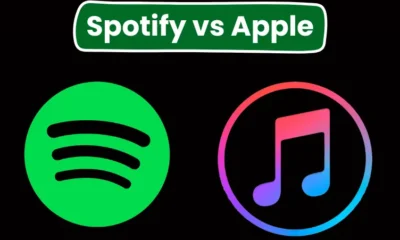
 Comparison10 months ago
Comparison10 months agoSpotify vs Apple Music: Which is the Better Music App in 2025?
-

 Blog7 months ago
Blog7 months agoDiscover the Power of digitalconnectmag.com: 5 Reasons Why It Matters Today
-

 ENTERTAINMENT9 months ago
ENTERTAINMENT9 months agoThe 15 Best Soap2day Alternatives for Streaming Movies & TV Shows in 2025
-
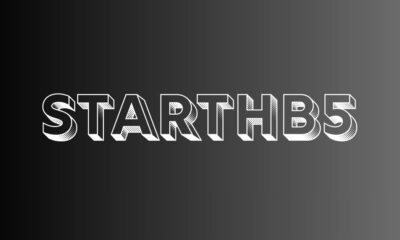
 TECHNOLOGY4 months ago
TECHNOLOGY4 months agoStarthb5: Your Gateway to Smarter Digital Innovation
-

 Comparison10 months ago
Comparison10 months agoSpotify vs Amazon Music: Who is The Winner in 2025?
-

 Comparison10 months ago
Comparison10 months agoSpotify vs Pandora: Which is Better Service in 2025?
-

 Comparison10 months ago
Comparison10 months agoSpotify vs YouTube Music: Which is Better for You in 2025?
-
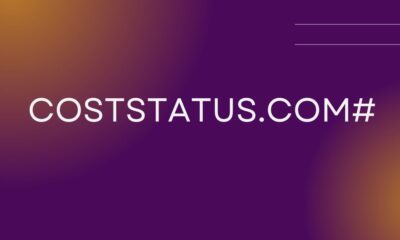
 BUSINESS9 months ago
BUSINESS9 months agoCostStatus.com#: Your Ultimate Guide to Money Management
